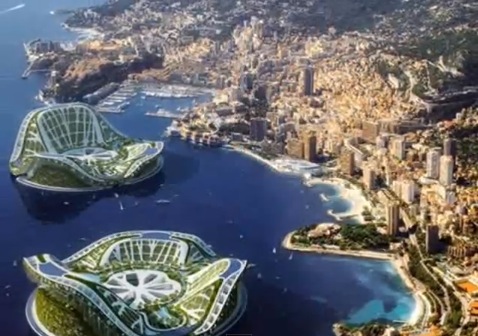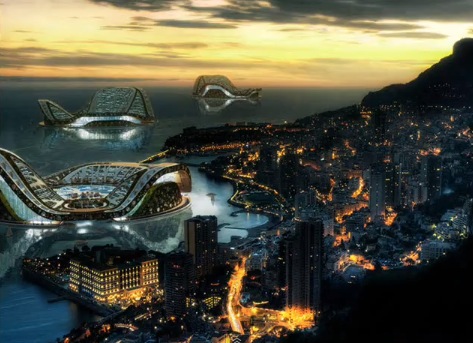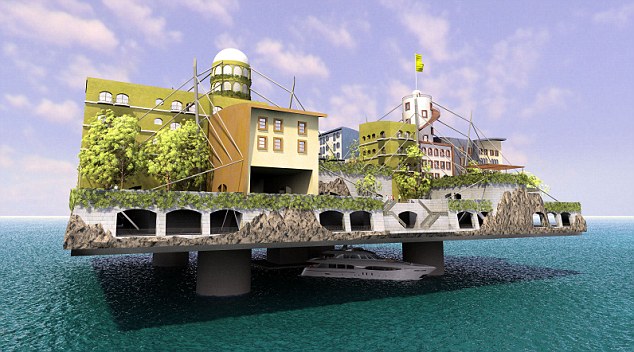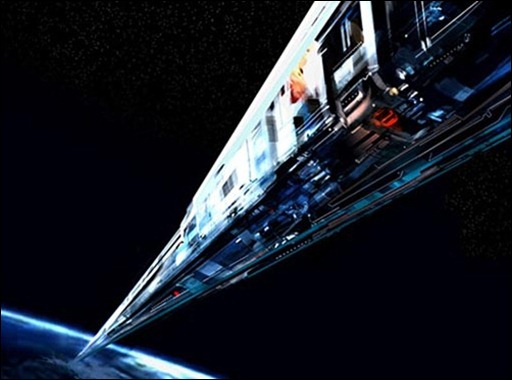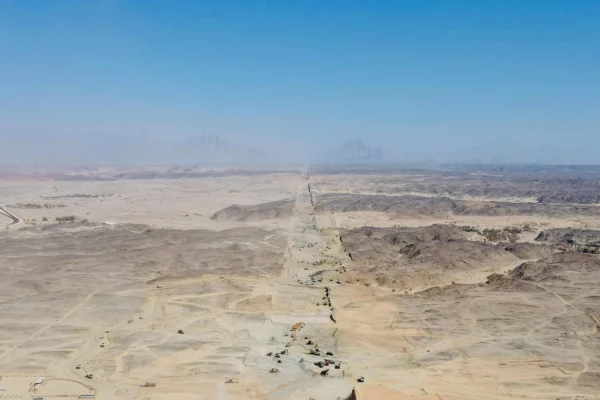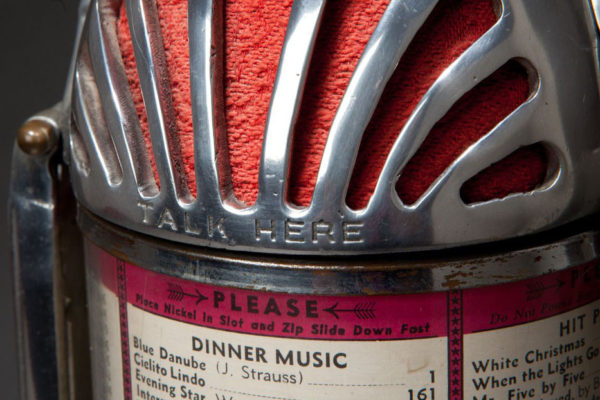Straight out of a Jetson’s cartoon, let’s take a look at a few cities of the future that are actually real possibilities…
1. Floating Megacities
Self-contained, self-sufficient monolithic sea-standing cities have recently been proposed that could one day be the solution for refugees of natural disasters. The most famous and most advanced proposal yet is NOAH in New Orleans; a habitat for 40,000 residents who could benefit from the planned residential units, school system, commercial, retail, hotels, casinos, parking, and public works facilities.
An award-winning Belgian architect Vincent Callebaut, has also come up with a design called the Lillypad, designed to be made if major cities are affected by climate change. “Some countries spend billions of pounds working on making their beaches and dams bigger and stronger. But the Lilypad project is actually a long term solution to the problem of the water rising,” says the architect. Centred around a lake which collects and then purifies rain water, the Lilypad will drift around the world following the ocean currents and streams.
2. Amsterdam’s City under its Canals
“It is both feasible and sustainable, creating a city beneath the city is not futuristic, it is a necessity in this day and age,” says Dutch architect Moshé Zwarts who wants to build an underwater city beneath Amsterdam. “There has always been a lack of space in the city, so what we are doing is building a city under the city by using a new construction technique, which will not interfere with street traffic by draining and then building under the canals,” he says. The subterranean city would offer more parking, shopping and “leisure”.
“Amsterdam sits on a 30-metre layer of waterproof clay which will be used together with concrete and sand to make new walls. Once we have resealed the canal floor, we will be able to carry on working underneath while pouring water back into the canals. It’s an easy technique and it doesn’t create issues with drilling noises on the streets.” The architect also ensure the project called AMFORA, is a green, CO2 neutral one that will improve the air will improve in Amsterdam, filtering exhaust fumes and other harmful substances.
3. Paypal’s Tax Utopia
Peter Thiel, the billionaire Paypal founder and one of Facebook’s first investors is constructing a moveable floating island in the new year that would have the means to support millions of people. The idea is that the island would float in international waters and would not be governed by the rules of any country. Initially, Thiel plans to accomodate 270 of his employees along with their offices off the coast of San Francisco. Full-time settlement is scheduled for 2018. The island, a 12,000 ton diesel-powered structure, would be far enough off shore to be exempt from a wide range of jurisdictions including taxes, building codes, welfare requirements and don’t forget weapons restrictions! As for protest from the authorities: “Since they don’t think its possible they won’t take us very seriously. And they will not try to stop it until its too late,” says Thiel.
4. A Moon Colony by way of a Space Elevator
If we ever wanted to colonize space, this is probably our best shot. A space elevator? I’ve been watching to many science fiction films right? Well actually, just this past summer Microsoft hosted a three-day conference where scientists talked very seriously about plans to build a space elevator. It’s an ambitious engineering project that some say could get going within the next decade and NASA has already offered a prize of $1 million to engineers who can come up with the right materials. The WorldsBiggests.com attended the conference and had this to say:
Because the space elevator pulls cargo out of our gravity well, rather than pushing it using combustion, it would save a lot of energy and be capable of bringing far more materials offworld quickly. It would also be sustainable, making one or more runs per day. That it’s reusable already makes it many thousands of times cheaper than the one-time-use Soyuz rockets that bring supplies to the International Space Station, only to destroy themselves in Earth’s atmosphere. A single Space Shuttle launch cost $450 million, but the space elevator could be much cheaper and much more energy-efficient.
More Supercities of the Future on TheWorldsBiggests.com


